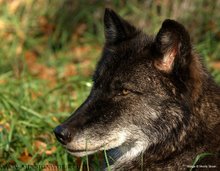From the Independent:
Chernobyl: Lost world
Two decades after disaster struck, Chernobyl's wastelands are now teeming with wildlife. Should they become a nature reserve?
On 26 April 1986, the worst nuclear accident in history occurred at the Chernobyl power station in the former Soviet Union. More than 135,000 people – and 35,000 cattle – living within 30 kilometres (19 miles) of the stricken nuclear reactor were evacuated and an unprecedented "zone of exclusion" was established around the site, close to the border between the Ukraine and Belarus...
Scientists have had access to limited data when it comes to assessing the true facts within the 4,000 square kilometres of the "zone of alienation". Photographs of the abandoned city of Pripyat, near Chernobyl, reveal that trees and shrubs have started to sprout through the roads and buildings. Nature has begun to reclaim what was originally lost to urban development and agriculture.
Scientists from the International Radioecology Laboratory in Slavutych have documented an increase in sightings of large animals that were rare or absent before the disaster. Several packs of wolves have appeared and they seem to have made easy meals of any stray dogs left behind by their owners. (Wolves Eat Dogs is the title of a novel based on the exclusion zone by Gorky Park author Martin Cruz Smith.)
The rare Przewalski's horse from the Russian steppe has been reintroduced, along with European bison. Beavers and boars are beginning to reshape the forest ecosystems, European lynx have been sighted and many rare birds, such as the black stork and white-tailed eagle, have returned, along with many swans and owls.
For some scientists, the sight of wildflowers growing through the cracks in the concrete roads of Pripyat and the many and varied species of larger animals within the zone are signs that something positive has come out of the disaster. These researchers believe that the detrimental effects of the radioactive fallout have been exaggerated, while the true impact of human activity has been overlooked.
"The benefit of excluding humans from this highly contaminated ecosystem appears to outweigh significantly any negative cost associated with Chernobyl radiation," said Robert Baker, a biologist at Texas Tech University, who has made more than a dozen scientific excursions into the zone. Baker believes that the diversity of animals and plants within the zone is what could be reasonably expected to be seen in a nature park dedicated to conservation. Indeed, there have been calls to turn the Chernobyl exclusion zone into what would become Europe's largest nature reserve...
--------------------------
There's a lot more to the article at the link. But it amuses me that nature can handle a nuclear accident a lot more easily than it can handle the ongoing presence of human beings.
(Or, alternately, there's a lot of hidden mutation going on; and in a few years the animal-men from Kamandi will erupt from their hidden lairs to take over the world. This is also possible.)
Subscribe to:
Post Comments (Atom)

No comments:
Post a Comment